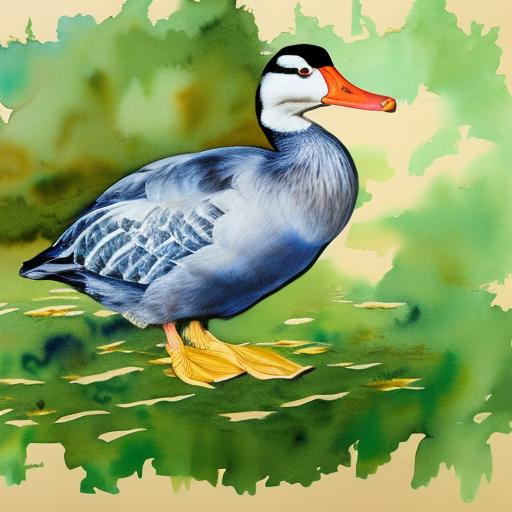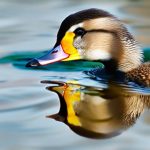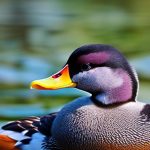Runner ducks, also known as Indian Runner ducks, are a unique and fascinating breed of domestic duck. They are known for their upright and slender posture, which sets them apart from other duck breeds. Runner ducks are popular for their excellent egg-laying abilities, making them a favorite among duck enthusiasts and small-scale farmers. These ducks are also known for their quirky and entertaining behavior, as they are highly active and love to forage and explore their surroundings. Runner ducks come in a variety of colors, including white, fawn, black, and chocolate, making them a visually appealing addition to any flock. Whether you are looking for a productive egg-layer or simply enjoy the company of these charming and comical birds, runner ducks are a delightful addition to any homestead or farm.
Runner ducks are a versatile breed that can thrive in a variety of environments, making them an ideal choice for both rural and urban settings. Their adaptability and friendly disposition make them a popular choice for those looking to add ducks to their backyard or small farm. With their unique appearance and entertaining behavior, runner ducks are sure to capture the hearts of anyone who encounters them. In this article, we will explore the history and origin of runner ducks, their physical characteristics, different breeds, unique traits and behaviors, as well as the care and maintenance required to keep these delightful birds happy and healthy.
Key Takeaways
- Runner ducks are a unique breed known for their upright posture and distinctive running gait.
- Runner ducks originated in Southeast Asia and were brought to Europe in the 1800s.
- These ducks have a tall, slender build with an upright carriage and come in various colors.
- Different breeds of runner ducks include the Fawn and White Runner, Chocolate Runner, and Blue Runner.
- Runner ducks are known for their excellent foraging abilities, high egg production, and calm temperament, making them a popular choice for backyard duck enthusiasts.
History and Origin of Runner Ducks
The history of runner ducks can be traced back to Southeast Asia, where they were originally bred for their egg-laying abilities. It is believed that runner ducks were first domesticated in the region that is now Indonesia, where they were kept by the Javanese people for both their eggs and meat. From there, runner ducks made their way to Europe in the 19th century, where they quickly gained popularity for their prolific egg-laying capabilities. The breed was further developed in England, where it became a favorite among farmers and poultry enthusiasts.
Runner ducks were officially recognized by the American Poultry Association in 1898, solidifying their place as a valuable and beloved breed in the United States. Over the years, runner ducks have continued to gain popularity for their unique appearance and excellent egg-laying abilities. Today, they can be found in backyard flocks, small farms, and even on larger commercial operations. Their rich history and enduring popularity make runner ducks a cherished part of the poultry world.
Physical Characteristics of Runner Ducks
Runner ducks are known for their distinctive upright posture, which sets them apart from other duck breeds. They have long necks and legs, giving them a tall and slender appearance. Their bodies are elongated and streamlined, with a slight curve to their back. Runner ducks have a small head with a straight bill and expressive eyes. They come in a variety of colors, including white, fawn, black, and chocolate, with some individuals displaying striking patterns and markings.
One of the most notable physical characteristics of runner ducks is their ability to run rather than waddle like other duck breeds. This unique trait is a result of their upright posture and long legs, which allow them to move quickly and gracefully on land. Their agile and upright stance gives them a regal and elegant appearance that is truly captivating. Runner ducks also have a strong and resilient build, making them well-suited for foraging and exploring their environment. Their physical characteristics make them not only visually appealing but also highly functional and adaptable.
Different Breeds of Runner Ducks
There are several different breeds of runner ducks, each with its own unique characteristics and traits. The most common breed is the Penciled Runner duck, which is known for its striking penciled markings on its feathers. These markings give the duck a distinctive and eye-catching appearance that sets it apart from other breeds. The Fawn and White Runner duck is another popular breed, known for its beautiful fawn and white coloring. This breed is prized for its excellent egg-laying abilities and friendly disposition.
The Chocolate Runner duck is a rare breed that is highly sought after for its rich chocolate-colored plumage. These ducks are not only visually stunning but also known for their productivity and hardiness. The Black Runner duck is another striking breed with its sleek black feathers and upright posture. This breed is valued for its striking appearance and excellent foraging abilities. Each breed of runner duck has its own unique qualities and characteristics, making them a diverse and captivating group of birds.
Unique Traits and Behaviors of Runner Ducks
Runner ducks are known for their quirky and entertaining behavior, making them a delight to observe and interact with. They are highly active birds that love to forage and explore their surroundings. Their upright posture allows them to move quickly on land, giving them a distinctive gait that is both comical and endearing. Runner ducks are also known for their social nature, often forming close bonds with their human caretakers as well as other ducks in their flock.
One of the most unique traits of runner ducks is their excellent egg-laying abilities. They are prolific layers, often outperforming other duck breeds in terms of egg production. This makes them a valuable addition to any farm or homestead looking to raise ducks for eggs. Runner ducks are also known for their calm and friendly disposition, making them easy to handle and care for. Their charming personality and entertaining behavior make them a popular choice for those looking to add ducks to their flock.
Care and Maintenance of Runner Ducks

Caring for runner ducks is relatively straightforward, making them an ideal choice for both experienced poultry keepers and beginners alike. Providing a safe and secure enclosure is essential to protect them from predators and the elements. Runner ducks also require access to water for swimming and bathing, as well as ample space to forage and explore. A balanced diet that includes commercial duck feed as well as fresh greens and insects will help keep runner ducks healthy and productive.
Regular health checks and access to veterinary care are important for maintaining the well-being of runner ducks. This includes monitoring for signs of illness or injury, as well as providing appropriate vaccinations and parasite control. Proper housing that offers protection from extreme temperatures and predators is essential for keeping runner ducks safe and comfortable. Additionally, providing enrichment such as toys, treats, and opportunities for social interaction will help keep runner ducks happy and stimulated.
Conclusion and Choosing the Right Breed of Runner Duck
In conclusion, runner ducks are a delightful and versatile breed that offers both practical benefits and entertainment value. Their rich history, unique physical characteristics, diverse breeds, and entertaining behaviors make them a valuable addition to any flock or farm. Whether you are looking for a productive egg-layer or simply enjoy the company of these charming birds, runner ducks are sure to capture your heart with their endearing personality and comical antics.
When choosing the right breed of runner duck for your flock, consider your specific needs and preferences. Whether you are drawn to the striking markings of the Penciled Runner duck, the rich coloring of the Chocolate Runner duck, or the classic elegance of the Black or Fawn and White Runner duck, there is a breed that is sure to capture your attention. No matter which breed you choose, runner ducks are sure to bring joy and entertainment to your life with their charming personality and captivating behavior.
If you’re interested in learning more about different breeds of runner ducks, you might also want to check out this informative article on when guinea fowl lay eggs. It’s always fascinating to explore the unique characteristics and behaviors of various poultry breeds.
FAQs
What are runner ducks?
Runner ducks are a breed of domestic duck known for their upright, penguin-like stance and their ability to run rather than waddle like other duck breeds. They are often kept for their egg-laying abilities and as pets.
What are the different breeds of runner ducks?
There are several recognized breeds of runner ducks, including the Fawn and White Runner, the White Runner, the Buff Runner, the Black Runner, and the Blue Runner. Each breed has its own distinct coloration and markings.
What are the characteristics of runner ducks?
Runner ducks are known for their tall, upright stance, long necks, and slender bodies. They have a distinctive running gait and are known for their agility and speed. They are also good foragers and are often kept for their ability to control pests in gardens and on farms.
What are the uses of runner ducks?
Runner ducks are primarily kept for their egg-laying abilities, as they are known to be prolific layers. They are also kept as pets and for their pest control abilities, as they are excellent foragers and can help control insect populations in gardens and agricultural settings.
What are the care requirements for runner ducks?
Runner ducks require access to water for swimming and foraging, as well as a balanced diet of duck feed and access to forage. They also need protection from predators and shelter from the elements. Additionally, they require regular veterinary care and attention to their overall health and well-being.
Meet Walter, the feathered-friend fanatic of Florida! Nestled in the sunshine state, Walter struts through life with his feathered companions, clucking his way to happiness. With a coop that’s fancier than a five-star hotel, he’s the Don Juan of the chicken world. When he’s not teaching his hens to do the cha-cha, you’ll find him in a heated debate with his prized rooster, Sir Clucks-a-Lot. Walter’s poultry passion is no yolk; he’s the sunny-side-up guy you never knew you needed in your flock of friends!







